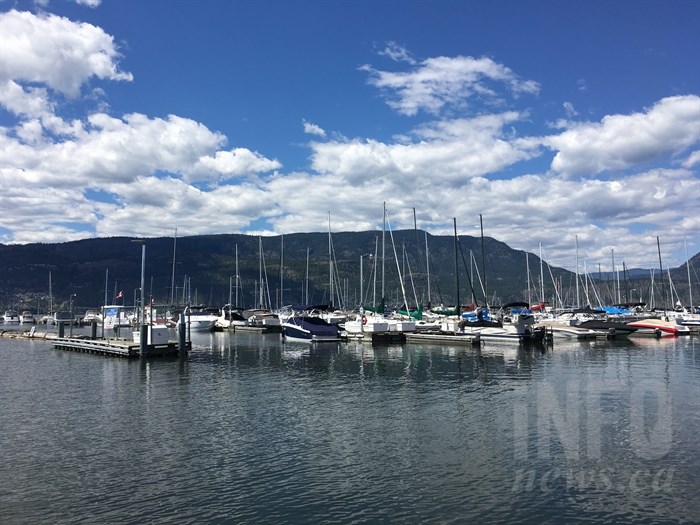
FILE PHOTO - Boaters continue to be discouraged from going out on Okanagan Lake due to the high water level.
(JENNA HICKMAN / iNFOnews.ca)
June 26, 2017 - 6:30 PM
KELOWNA - The water level in Okanagan Lake and Kalamalka Lake continues to drop slowly, however with levels still 62 centimetres above full pool, officials are still discouraging boating activities that cause a wake.
“Lake levels haven’t dropped that much overall, so until we start to see further decreases precautions need to be taken," Carla Weaden at the Central Okanagan Emergency Operations Centre says.
Weaden says the Emergency Operations Centre is working on a map for boaters indicating where the most at risk areas are. Once those areas area mapped out, boaters will have a better idea where they can operate without causing damage to the shoreline.
As of 5:25 a.m. Monday, June 26, Okanagan Lake was at 343.098 metres, a 4.2 c.m. drop from Friday.
Since June 9, when Okanagan Lake levels peaked at 343.25 centimetres, the lake has gone down 15.2 centimetres. At an average rate of a .89 centimeter decrease daily, residents can expect the lake to reach full pool in just over two months.
The water leve in Kalmalka Lakeis also going down. It's currently at 392.281 metres above sea level, a 4.4 centimetre drop since Friday.
Creeks levels have gone down significantly as well.
Crews have been working to take down protective measures in areas that are above the 343.5 metre flood advisory zone and are no longer at risk of flooding.
Approximately 90 per cent of the Mill Creek corridor has been completed; the remaining protective measures on Mill Creek will stay in place until lake levels recede further,” Weaden says.
However, there is a concern about where people are dumping their sandbags now that they no longer need them.
“What we’re starting to hear are that people are dumping sand in creeks, the lake and on beaches. Under no circumstance should sand be dumped in any of these areas," she says.
According to the B.C. water sustainability act, introducing any foreign matter into a stream is prohibited. By doing so, it can be a threat to the surrounding ecosystem and the riparian zone.
Another concern officials are keeping an eye on are the many trees growing on beaches that are currently submerged.
“We’re definitely concerned about soil erosion and the integrity of the root systems,” Kelowna infrastructure operations manager Ian Wilson says. “Willows are adaptable, but other species aren’t - we currently have crews monitoring the situation.”
To contact a reporter for this story, email Jenna Hickman or call 250-808-0143 or email the editor. You can also submit photos, videos or news tips to the newsroom and be entered to win a monthly prize draw.
We welcome your comments and opinions on our stories but play nice. We won't censor or delete comments unless they contain off-topic statements or links, unnecessary vulgarity, false facts, spam or obviously fake profiles. If you have any concerns about what you see in comments, email the editor in the link above.
News from © iNFOnews, 2017